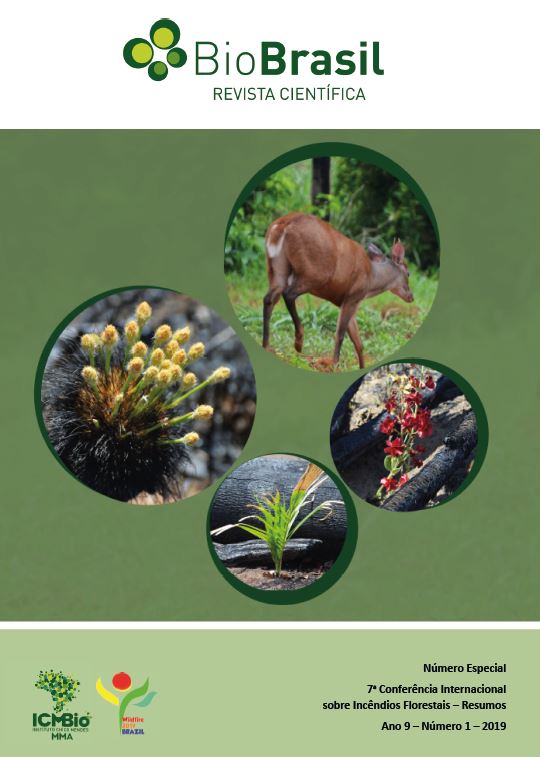Mapping fire regimes in the miombo woodlands of the Beira Corridor, Central Mozambique: preliminary results
DOI:
https://doi.org/10.37002/biodiversidadebrasileira.v9i1.989Palavras-chave:
Miombo Woodlands, Fire Regimes, MODIS, Sentinel 2Resumo
The Miombo woodlands (MW) of southern Africa are rich in biodiversity and provide important goods and services for over 80% of rural and urban dwellers. Fire is one of the main disturbance factors but also key to maintain ecosystem functions. The Beira Corridor (BC) in Central Mozambique is an important economic development corridor with substantial land use and cover changes. Shifting cultivation and charcoal production are the main drivers of ecosystem changes. This study aims to understand the ecological consequences of the spatial and temporal distribution of FR (frequency, intensity, and severity) in the BC. This is key to inform decisionmaking on ecosystem management and conservation. MODIS burned area (MCD64A1, 500 m) and MODIS active fire (MCD14ML, 1 km) were combined with VIIRS I-band, 375 m active fire, to analyze the FR for the period 2001 to 2018. A new Sentinel 2 burned area algorithm was tested for assessing its potential for mapping FR and accuracy was compared with the MODIS products. Landsat images were used to mask MW, applying the random forest algorithm. Spatial data on human population, agricultural and charcoal fields were used to address the drivers of fire. Preliminary results indicate that 39% of MW burns annually, exhibiting a larger incidence of fires when compared to other land cover classes. This spatial pattern of fire regime reinforces the role of MW associated with agriculture and charcoal production, as the main activities do the local communities and crucial drivers of forest change in the BC
Downloads
Referências
Subtema 2 - apresentação oral
Downloads
Publicado
Edição
Seção
Licença
Copyright (c) 2019 Os autores mantêm os direitos autorais de seus artigos sem restrições, concedendo ao editor direitos de ção não exclusivos.

Este trabalho está licenciado sob uma licença Creative Commons Attribution-NonCommercial-NoDerivatives 4.0 International License.
Os artigos estão licenciados sob uma licença Creative Commons Atribuição-NãoComercial-SemDerivações 4.0 Internacional (CC BY-NC-ND 4.0). O acesso é livre e gratuito para download e leitura, ou seja, é permitido copiar e redistribuir o material em qualquer mídia ou formato.











